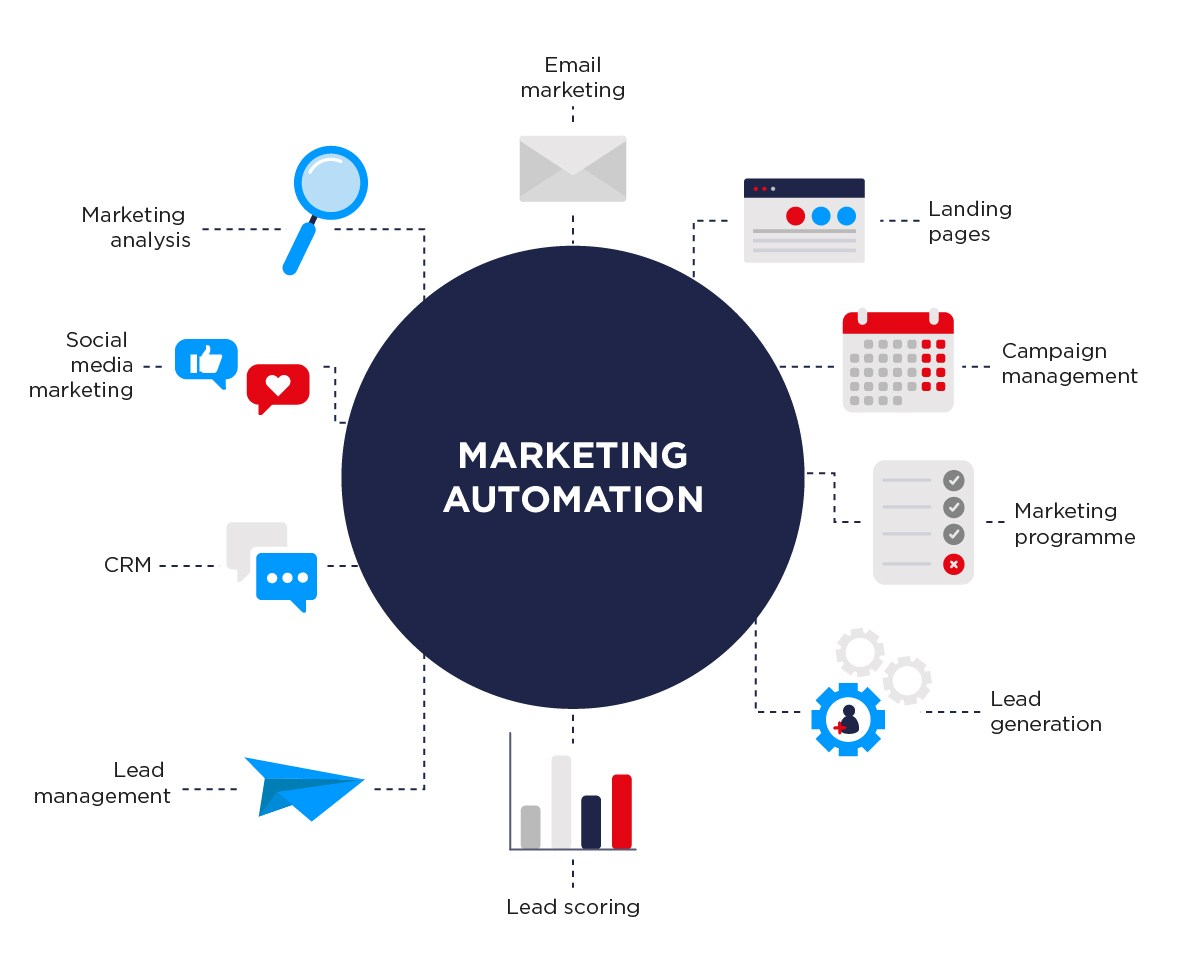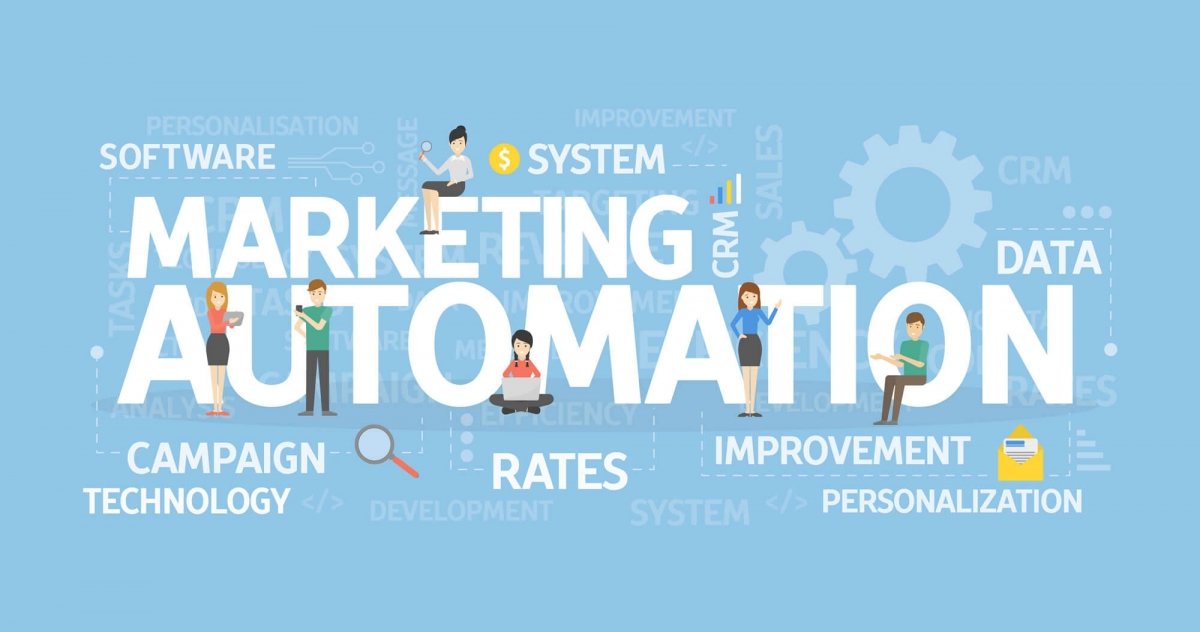Are you aware of the “marketing automation tools” that have been introduced by various companies in Japan and overseas to support
marketing
efficiency?
This article provides an easy-to-understand explanation of the basics of marketing automation, introduces typical tools, and points to consider when choosing a tool.
If you want to know the basics of marketing automation, or if you are thinking about implementing marketing automation tools, please use this as a reference.
What is marketing automation?
Marketing automation (MA) refers to tools and software that centrally manage information on acquired prospects and automate, visualize, and support marketing operations.
By automating the routine, time-consuming, costly, and enormous amount of work that was previously done manually and repeatedly in marketing operations, efficiency is improved and follow-up and approaches to prospective customers can be made appropriately. I will.
Marketing automation allows for smooth sharing of data with the sales department, which can be expected to improve operational efficiency.

Why marketing automation is needed
Marketing automation is being implemented by many
B2B
companies. One of the reasons why it is needed is that with the spread of the Internet, it is now possible to download data summaries of products and services. Since it is now possible to complete competitive estimates with other companies and even purchase online, there is no longer a need for a sales style that requires regular customer visits.
Before the spread of the Internet, when people were faced with the question of whether there was a product like this or a service that could solve this problem, it was natural to call the sales person in charge, but now the purchasing process involves searching on the Internet. It has changed.
It is necessary to respond to these changes in the purchasing process, and marketing automation has started to attract attention.
The second is improving data analysis technology.
By introducing marketing automation, all digital actions of customers are converted into data and visualized, making it possible to approach them efficiently.
For example, we can obtain data such as which pages prospective customers visit, how many times they visit, how long they stay on the site, and how they visit the site, and analyze customer needs with high precision. Business activities will become smoother.

Benefits of marketing automation
What are the benefits of implementing marketing automation?

Improve operational efficiency
The most obvious benefit is increased operational efficiency.
Marketing automation automatically performs everything from prospect generation to communication, leading to more efficient marketing and sales activities.
You can also reduce costs and time by visualizing the customer’s level of purchase intent and clarifying what you should approach now.

Preventing human error
When converting customer information into data manually, even if you are careful, typos and other input errors may occur, and depending on the amount of data, it may take a huge amount of time and manpower.
In addition, if you try to manually send emails according to the customer’s situation, there is a possibility of mistakes such as erroneous sending or delivery failures.
Marketing automation can perform these tasks automatically and accurately, preventing human error.

Prevent losing potential customers
Unless your company approaches potential customers who have not made a purchase or who have only exchanged business cards, that will be the end of the story.
You may end up becoming a customer of a competing company.
By using marketing automation, you can understand the products that potential customers are interested in and the issues they are facing, so you can avoid missing out on opportunities to approach them.
Improving order rate and negotiation rate
With marketing automation, you can develop potential customers while communicating with them, so you can understand and approach customers who have an increased desire to purchase, and as a result, the order rate and business negotiation rate improve. .
Until the customer thinks, “Okay, let’s buy!” it is automated, which reduces sales costs and labor.
By understanding the customer’s needs and providing appropriate products and services, you can expect to receive orders and opportunities for business negotiations that you would not have been able to receive in the past.
Building good relationships with customers
Customers do not have a good impression of sales that are out of line with the timing or products, or approaches that show a desire to sell.
Marketing automation allows you to build good relationships with your customers by delivering the right information at the right time.

Marketing automation features
Let’s take a look at the basic features implemented in marketing automation tools.
Acquisition of potential customers
This function collects information about prospective customers.
Simply put, it’s a collection of lists.
- Creating landing pages and registration forms
-
Building
owned media
-
SEO
analysis function
Nurturing prospects
This function distributes appropriate content such as emails and SNS according to the collected list, and increases enthusiasm for purchasing while communicating with customers.
- Segment email delivery function
- Campaign management (delivery scenario, step mail)
- Tracking function (target analysis by IP analysis)
Selection of prospective customers
This function classifies customers based on their attributes and behavior data from access analysis, and selects prospects with a high level of interest in purchasing.
- Access log analysis function
- Scoring function
Prospect list management
This function centrally manages customer information and creates a database.
You can manage not only information on prospective customers acquired using marketing automation tools, but also information on customers acquired in the past and information acquired offline, such as at seminars, exhibitions, and business card exchanges.
- Prospect management function
- Customer bulk import function
-
SFA/
CRM
collaboration function - Analysis report function

Introduction to marketing automation tools
We will introduce examples of typical marketing automation tools that have been introduced to many companies.
We will also explain the features and strengths of the tools, so please use this as a reference when choosing a tool to solve your company’s problems.
Pardot
Pardot is a marketing automation tool specialized in BtoB provided by American company Salesforce.com. According to a 2020 survey by DataSign Inc., it ranks first with a domestic share of 22.5%.
It is strong at creating and nurturing high-quality prospects, and by utilizing tracking and scoring functions, it is possible to extract users who are likely to lead to business negotiations.
By linking with the company’s Sales Cloud, you can maximize your approach at the right time to meet customer needs.
Marketo
Marketo is an American marketing automation tool that has been used by more than 5,000 companies around the world, and has also been used by companies operating domestically and internationally, such as the Sony Group and Hitachi, Ltd.
The high adoption rate is due to the fact that it has functions that can meet many needs, whether BtoB or BtoC, and can be easily operated, customized, and linked with external systems even by people who are not strong in systems. It’s also the reason.
HubSpot
HubSpot is a marketing automation tool with features such as free CRM functions, SEO support functions, and the ability to create content that interests users. Paid plans are currently being used by over 100,000 companies in over 120 countries around the world.
There is a free plan and a paid plan (3 levels), and you can start by installing it for free and upgrading it according to your needs, so it has the advantage of increasing the efficiency of marketing measures at low cost.
SHANON MARKETING PLATFORM
SHANON MARKETING PLATFORM, provided by the Japanese company Shannon Co., Ltd., is a marketing automation tool that supports a wide range of channels. It has features that can be used for a wide range of purposes, such as measuring advertising effectiveness, scoring, and linking with CRM. As of 2020, the number of implementations in Japan is over 900.
It has a virtual exhibition function that creates an immersive virtual space with a 360° panoramic viewer, and can also be used as an event marketing tool.
List Finder
List Finder is a domestic marketing automation tool that has been implemented in over 1,600 accounts in Japan and boasts the No. 1 market share among listed companies specializing in BtoB.
It is attractive because of its simple structure, easy-to-operate management screen, and affordable price, which makes it easy to install, and it also provides extensive support. Therefore, even companies and personnel using marketing automation tools for the first time can get started without any hesitation.
In addition to functions such as email distribution, access analysis, and centralization of customer data necessary for BtoB marketing, there are also functions that allow sales approaches tailored to customers and excellent functions that can be used for each issue, such as email marketing functions. There are many.

Points to consider when choosing a marketing automation tool
There are many marketing automation tools other than those introduced above.
It takes a lot of money and time to introduce a tool, so be sure to understand the key points when choosing a tool and compare them before making your selection.
Choose the tools that suit your business
There are two types of marketing automation tools: one for BtoB and one for BtoC.
The functions that are considered important will differ depending on the business model, so it is important to decide in advance the purpose of introduction, who will be the target when using it, and what kind of functions you want to use.
Choose a tool that you can use yourself
Marketing automation tools are not tools that produce results just by introducing them, but rather they need to be utilized over time while going through the PDCA cycle.
Expensive tools have a wealth of functions and can accomplish more, but they also require marketing automation and
web marketing
literacy, so it’s important to know whether your company has the resources and skills to fully utilize marketing automation tools, or if you don’t. When implementing the system, consider whether it can be secured externally.
Has it been adopted by companies in the same industry and size as your company?
Knowing what kind of marketing automation tools have been introduced by companies with similar business content and size as your company can be very helpful when choosing a tool to introduce.
Since the challenges, goals, and
marketing strategies
they face are similar, the functions they require from a marketing automation tool will likely be similar.
When choosing a tool, be sure to research in advance what tools other companies are using.
Do you have a support system?
Even if you decide to introduce a tool that is suitable for your company’s resources, you will always run into functions that you cannot fully use or questions about whether it is possible to do something.
In such cases, an important point to consider when making a selection is whether there is a strong support system and whether you can feel free to consult with someone.
Don’t forget to check whether the support is free or paid.

summary
We explained an overview of marketing automation and points to consider when implementing it.
Marketing automation is now essential to expanding business possibilities as marketing operations are emphasized in the business scene.
Marketing automation is just a tool to make marketing operations more efficient, so it is important to choose one based on functionality, effectiveness, and cost.
Please take a look back at your company’s structure and marketing strategy, and consider what tools you should introduce.


